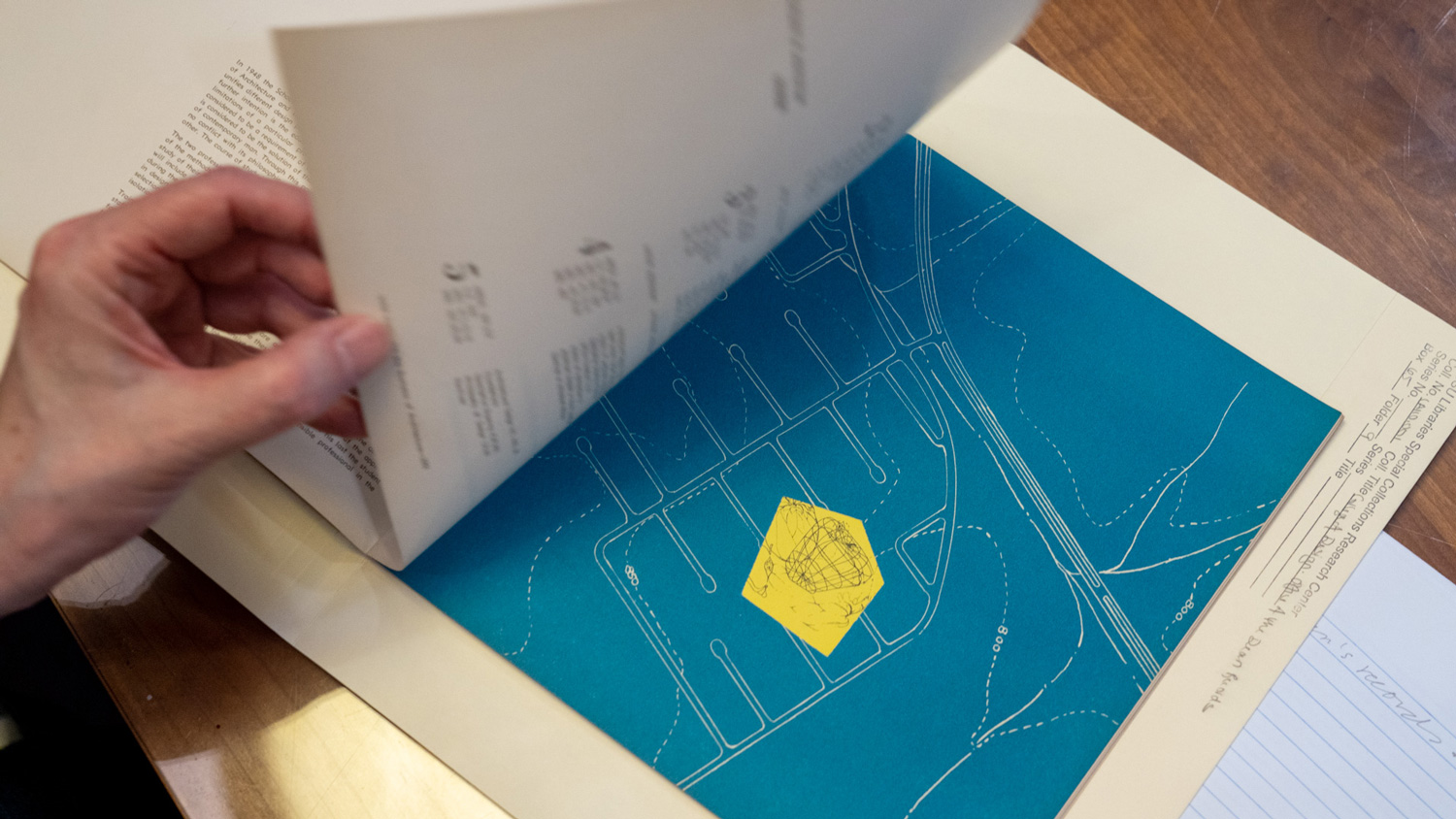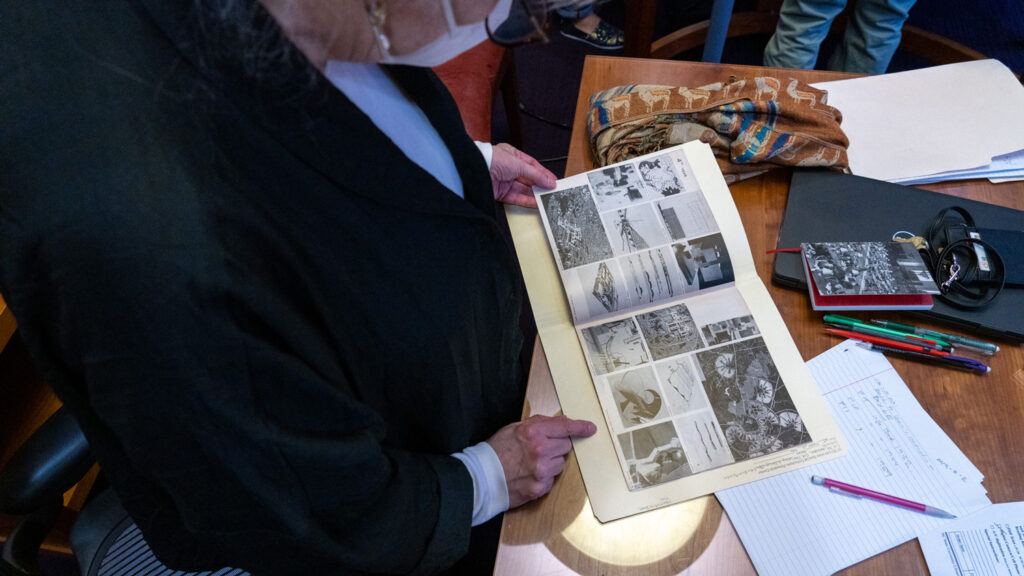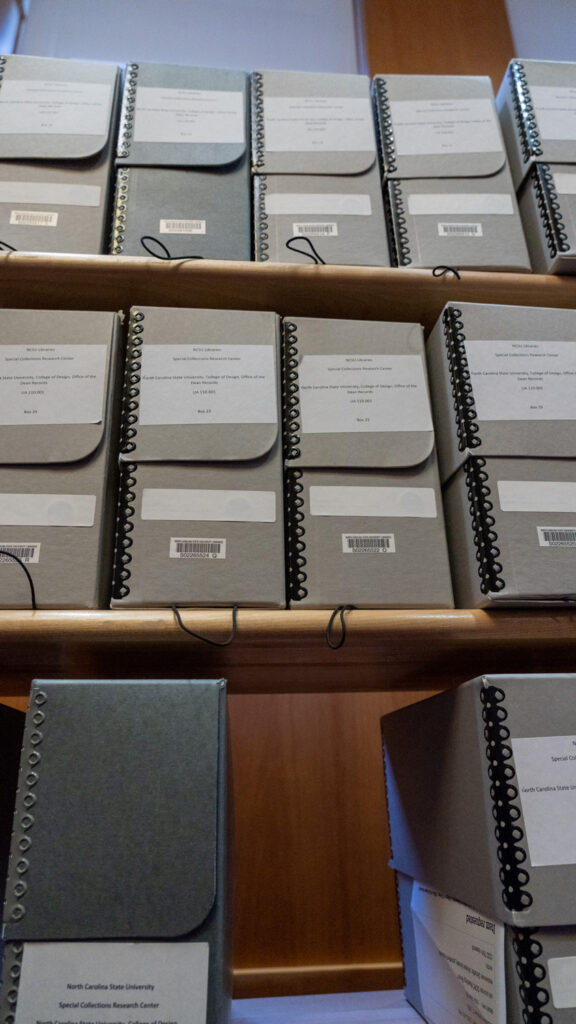Sifting Through the Past

by Kristen Schaffer, PhD, associate professor of architecture
Archives are like a box of chocolates. You never know what you’re going to get. Does that dispel all notions of dry and dusty? I hope so. For archives are as tempting to researchers as the assorted box is to chocoholics. And it’s true, we never know what we are going to find. We all hope to find pieces of the puzzle we are trying to complete, but sometimes we find things we didn’t even know we should be looking for.
A colleague and I have been spending some time lately in the NC State Libraries archives, as we prepare for the 75th anniversary celebration and a new history of the College of Design. Before the archival search, we started our hunt with two published sources: Bob Burns’ Reflections and Actions (1997) which provides a brief overview of the School of Design, and Roger Clark’s School of Design: The Kamphoefner Years 1948-1973 (2007) which is somewhat more extensive. While great starting points, these works need to be brought up to date and the histories of the departments and programs are due more depth and detail.

Bob and Roger lived through at least part of the school’s earlier history and thus had insight into what is missing from the archives, what threads need to be picked up, and what was not documented or recorded or saved. What survives can sometimes be an accident of history. Despite the best efforts of bureaucracies, documents can be lost, misfiled, accidentally or even intentionally destroyed. But if archives are fallible, so are our memories. Our recollections are often biased by our own point of view and don’t include what we didn’t know. How do we know what we don’t know? We go dig around in the archives! We balance recollections (ours or those of others who lived the experience) with archival materials and published sources.

Archives can be disappointingly meager or absolutely intimidating. Our NC State Special Collections belong to the latter category. The records of the Office of the Dean alone contain 103 boxes of material stretching 69 feet. So far, the boxes I’ve looked at each contain about 15 folders. That’s a lot of material. There is also a College of Design annual reports collection, and let’s not forget the collections of college publications and college photographs. There are as well separate sets of records for the School of Architecture, Department of Landscape Architecture, Department of Industrial Design, and Department of Art + Design. Surprisingly, there is no similar collection for the Department of Graphic Design. And then there are the papers or collections of Henry Kamphoefner, Marvin Malecha, Edwin Thurlow, Lewis Clarke, Robert Burns, Roger H. Clark, and Meredith Davis, as well as the Martha Scotford Research and Study Collection on Graphic Design and the Center for Universal Design Records, among others. Of course, we use finding aids and consult with the expert staff, but it is still intimidating, Such collections inspire some level of fear knowing that we will miss something. We just hope it’s not that important.
When I say my colleague and I have been in the archives, well, we haven’t been really because that area is accessible only to the staff. Rather, we are camped out in the Special Collections Reading Room of D.H. Hill Library, where we are presented with one and only one box at a time, and only after we have surrendered our coats and bags. Pens are not allowed but fortunately, phones are. It’s not that our library rules are particularly draconian. Such requirements are in place to preserve the collections of most archives. That being said, having just one box at a time provides focus and a sense of immediacy. I find I am fully present in the archives. It engenders that bliss, that joy that comes from complete attention and discovery.
However, what is largely missing from the archives – or at least the boxes I have searched so far – are records of the student experience. The official documents and bureaucratic records fail to capture what it was like to be a student here, but that’s where you can help. The college is collecting student reminiscences for future generations and for the 100th celebration! Please go to https://design.ncsu.edu/75th/share-your-story/ to save yours. Be remembered for the 100th!
___________________________
This article first appeared in the 2023 issue of Designlife Magazine. Read other stories from our 75th anniversary.
- Categories:


